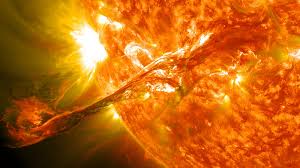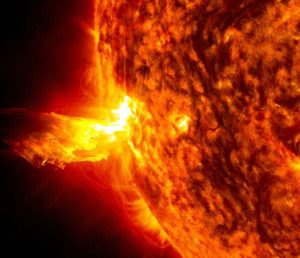

Sebastian Kettley – November 25, 2021
A so-called coronal mass ejection (CME) was seen escaping the Sun on Wednesday and may deliver a “glancing blow” to the planet. CMEs are large clouds of charged particles and magnetic field that stream from the Sun’s corona – the outermost layer of the star’s atmosphere. According to the US Space Weather Prediction Center (SWPC), CMEs can reach the planet at speeds between 250 km per second and 3,000 km per second.
Astronomers at SpaceWeather.com have now warned yesterday’s CME could reach the planet by Saturday.
The warning comes after a large filament erupted from the Sun’s southern hemisphere.
The filament split the Sun’s atmosphere wide open and released a cloud of debris into space.
The website’s astronomers wrote: “Imagine a canyon 50,000 miles long with towering walls of red-hot plasma.
“Yesterday, there was one on the Sun.
“It formed when a filament of magnetism lifted off from the southern hemisphere.
“The erupting filament split the Sun’s atmosphere, carving out the canyon as it ascended.
“The glowing walls remained intact for more than six hours after the explosion.”
The debris trailing from the blast was photographed by NASA’s STEREO-A spacecraft and the Solar and Heliospheric Observatory (SOHO).
Space Weather added: “First-look data suggest it might deliver a glancing blow to Earth’s magnetic field on November 28.”



